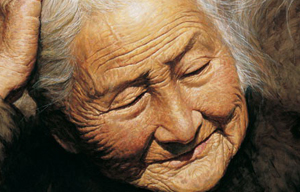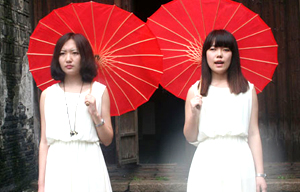
 'Taken 2' grabs movie box office crown
'Taken 2' grabs movie box office crown
 Rihanna's 'Diamonds' tops UK pop chart
Rihanna's 'Diamonds' tops UK pop chart
 Fans get look at vintage Rolling Stones
Fans get look at vintage Rolling Stones
 Celebrities attend Power of Women event
Celebrities attend Power of Women event
 Ang Lee breaks 'every rule' to make unlikely new Life of Pi film
Ang Lee breaks 'every rule' to make unlikely new Life of Pi film
 Rihanna almost thrown out of nightclub
Rihanna almost thrown out of nightclub
 'Dark Knight' wins weekend box office
'Dark Knight' wins weekend box office
 'Total Recall' stars gather in Beverly Hills
'Total Recall' stars gather in Beverly Hills
British royal paintings exhibition charts 250 years of fashion
Updated: 2013-05-10 15:41
(English.news.cn)
|
||||||||
CHANGES AND FOREIGN INFLUENCES
During the 16th century there was no English style of dress, Reynolds told Xinhua. "Shakespeare remarks on it, with the English combining various elements from abroad to make something quite fantastic."
During the 16th century fashion drew its inspiration from the most powerful European nation Spain, and its domination across Europe of its rulers the House of Habsburg.
That meant Spanish styles were worn in Italy, the Low Countries and parts of Germany to make a political presence by what royalty, court and the ruling class were wearing; the fashion emphasized how powerful Spain was and how far its power extended.
But in the 17th century France became more important, and at the same time it became more the leader of fashion, symbolized by the Sun King Louis XIV's court and his court at Versailles, where being fashionable seemed to be the main task of courtiers, who were principally there to reflect glory on Louis.
"By the time of the 17th century we have the Stuart style, with Charles I being a trendsetter and a leader of fashion and I think that is when English dress really come into its own," said Reynolds.
By the end of the 17th century, Charles II (1660-1685, Charles I's son) was consciously trying to create an English form of dress, said Reynolds, although France remained the leading exporter of luxury goods.
However, Charles II even had a French tailor, to keep him right up to date with the cutting edge of court fashion and put him one step ahead of the French.
One of the paintings shows him in a distinctive coat and breeches "to distinguish him from the royal fashions of France," said Reynolds.
The exhibition takes in paintings from the time of Henry VII (1485-1509) onwards, and charts an era when fashion became more accessible, if not to the common man then to the rich man, instead of being the preserve of the court and royalty.
"Fashions still continue to be used to demonstrate status but it is not just the elite any more," said Reynolds.
"During Henry VIII's time (1509-1547), to be really fashionable you had to be at the court and really, really rich. But by the 17th century there is the rising gentry and merchant classes. This rise of the middle class able to follow fashions is a trend that continues even more into the 18th century."
Most Viewed
Editor's Picks

|

|

|

|

|

|
Today's Top News
Shenzhou X astronaut gives lecture today
US told to reassess duties on Chinese paper
Chinese seek greater share of satellite market
Russia rejects Obama's nuke cut proposal
US immigration bill sees Senate breakthrough
Brazilian cities revoke fare hikes
Moody's warns on China's local govt debt
Air quality in major cities drops in May
US Weekly

|

|









